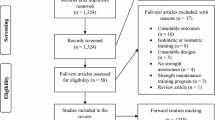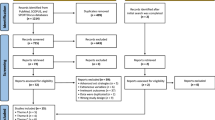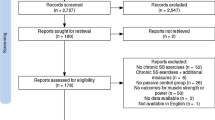Abstract
The aim of this study was to evaluate the effects of electrical stimulation program on pain, disability, and quadriceps strength in the patients with knee osteoarthritis. Fifty women diagnosed as knee osteoarthritis were randomized into two groups as electrical stimulation and biofeedback-assisted isometric exercises. Both of the programs were performed 5 days a week, for a duration of 4 weeks. Outcome measures for pain were visual analogue scale pain score and Western Ontario McMaster osteoarthritis index (WOMAC) pain score. Disability and stiffness were assessed with WOMAC physical function and stiffness score. One repetition maximum (RM) and 10 RM were used for measuring quadriceps strength. In addition, 50 m walking time and 10 steps stairs climbing up-down time were evaluated. Both groups showed significant improvements in pain, physical function, and stiffness scores after the therapy. There were statistically significant improvements in 50 m walking time and 10 steps stairs climbing up-down time and 1 RM and 10 RM values indicating the improvement in muscle strength. In addition, there were no significant differences between the groups after the therapy. We conclude that electrical stimulation treatment was as effective as exercise in knee osteoarthritis and electrical stimulation treatment can be suggested especially for the patients who have difficulty in or contraindications to perform an exercise program.
Similar content being viewed by others
References
Hurley MV, Scott DL (1998) Improvements in quadriceps sensorimotor function and disability of patients with knee osteoarthritis following a clinically practicable exercise regime. Br J Rheumatol 37:1181–1187
Cooper C (1998) Epidemiology. In: Klippel JH, Dieppe PA (eds) Rheumatology, 2nd edn. Mosby, London, pp 8.2.1–8.2.8
Felson DT, Lawrence RC, Dieppe PA et al (2000) Systemic risk factors for osteoarthritis. In: Felson DT (ed) Osteoarthritis: new insights. Part 1: the disease and its risk factors. Ann Intern Med 133:635–646
Petrella RJ (2000) Is exercise effective treatment of osteoarthritis of the knee? Br J Sports Med 34:326–331
Baker K, McAlindon T (2000) Exercise for knee osteoarthritis. Curr Opin Rheumatol 12:456–463
Levitt R, Deisinger JA, JR Wall et al (1995) EMG feedback-assisted postoperative rehabilitation of minor arthroscopic knee surgeries. J Sports Med Phys Fitness 35:218–23
Liberson WT (1984) Electrotherapy In: Asa P Ruskın (ed) Current therapy. Physiatry. Saunders, Philadelphia, pp 161–191
Flores RH, Hochberg MC (1998) Definition and classification of osteoarthritis. In: Brandt K, Doherty M, Lohmander LS (eds) Osteoarthritis. Oxford University Press, New York, pp 1–12
Evcik D, Sonel B (2002) Effectiveness of a home-based exercise therapy and walking program on osteoarthritis of the knee. Rheumatol Int 22:103–106
Elliott KJ, Sale C, Cable NT (2002) Effects of resistance training and detraining on muscle strength and blood lipid profiles in postmenopausal women. Br J Sports Med 36:340–344
Hakkinen K, Kraemer WS, Pakarinen A et al (2002) Effects of heavy resistance power training on maximal strength, muscle morphology and hormonal response patterns in 65–75 years old men and women. Can J Appl Physiol 27:213–231
Rogind H, Bibow-Nielsen B, Jensen B et al (1998) The effects of a physical training program on patients with osteoarthritis of the knees. Arch Phys Med Rehabil 79:1421–1427
Rutherford OM, Jones DA, Newham DJ (1986) Clinical and experimental application of the percutaneous twitch superimposition technique for the study of human muscle activation. J Neuro Neurosurg Psychiatry 49:1288–1291
Maurer BT, Stern AG, Kinossian B et al (1999) Osteoarthritis of the knee: isokinetic quadriceps exercise versus and educational intervention. Arch Phys Med Rehabil 80:1293–1299
Slemenda C, Brandt KD, Heilman DK et al (1997) Quadriceps weakness and osteoarthritis of the knee. Ann Intern Med 127:97–104
Fisher NM, Gresham G, Pendergast DR (1993) Effects of a quantitative progressive rehabilitation program applied unilaterally to the osteoarthritic knee. Arch Phys Med Rehabil 74:1319–1326
Mohr T, Carlson B, Sulentıc C et al (1985) Comparison of isometric exercise and high volt stimulation on quadriceps femoris muscle strength. Phys Ther 65:606–612
Kuptniratsaikul V, Tosayanonda O, Nilganuwong S et al (2002) The efficacy of a muscle exercise program to improve functional performance of the knee in patients with osteoarthritis. J Med Assoc Thai 85:33–40
Deyle GD, Henderson NE, Matekel RL et al (2000) Effectiveness of manual physical therapy and exercise in osteoarthritis of the knee. A randomized, controlled trial. Ann Intern Med 132:173–181
O’Reilly SC, Muir KR, Doherty M (1999) Effectiveness of home exercise on pain and disability from osteoarthritis of the knee: randomized controlled trial. Ann Rheum Dis 58:15–19
Mysiw WJ, Jackson RD (2000) Electrical stimulation. In: Braddom RL (ed) Physical medicine and rehabilitation, 2nd edn. Saunders, Philadelphia, pp 459–487
Pekindil Y, Sarıkaya A, Birtane M et al (2001) 99mTc-Sestamibi muscle scintigraphy to asses the response to neuromuscular electrical stimulation of normal quadriceps femoris muscle. Ann Nucl Med 15:397–401
Selkowıtz DM (1985) Improvement in isometric strength of the quadriceps femoris muscle after training with electrical stimulation. Phys Ther 65:186–195
Gaines JM, Metter EJ, Talbot LA (2004) The effect of neuromuscular electrical stimulation on arthritis knee pain in older adults with osteoarthritis of the knee. Appl Nurs Res 17:201–206
Lucca JA, Recchiuti SJ (1983) Effect of electromyographic biofeedback on an isometric strengthening program. Phys Ther 63:200–203
Valli P, Boldrini L, Bianchedi D et al (2002) Effect of low intensity electrical stimulation on quadriceps muscle voluntary maximal strength. J Sports Med Phys Fitness 42:425–430
Author information
Authors and Affiliations
Corresponding author
Rights and permissions
About this article
Cite this article
Durmuş, D., Alaylı, G. & Cantürk, F. Effects of quadriceps electrical stimulation program on clinical parameters in the patients with knee osteoarthritis. Clin Rheumatol 26, 674–678 (2007). https://doi.org/10.1007/s10067-006-0358-3
Received:
Revised:
Accepted:
Published:
Issue Date:
DOI: https://doi.org/10.1007/s10067-006-0358-3




